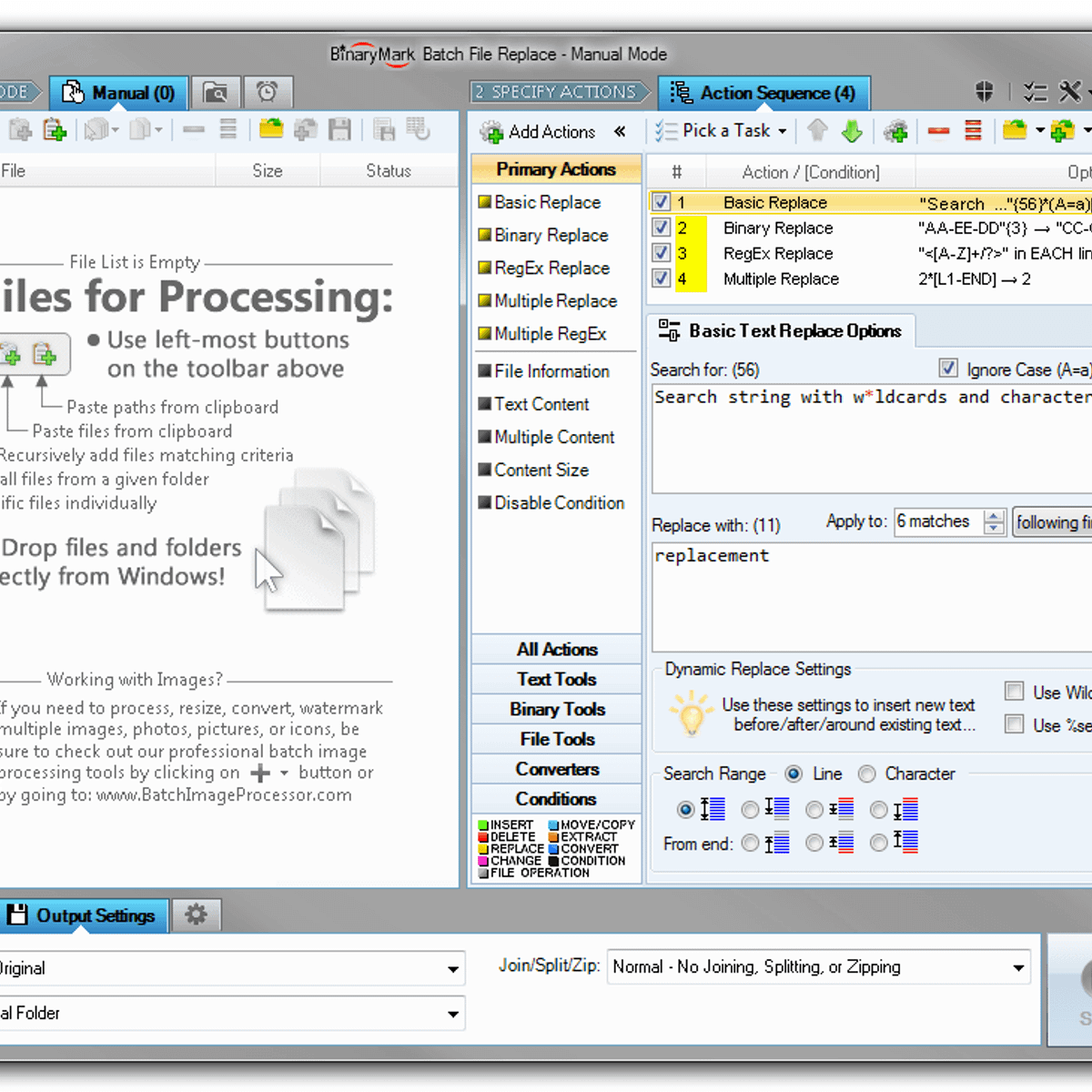


In MS-DOS, a batch file is a text file containing a series of commands intended to be executed by the command interpreter. It's very convenient and handy. Is it possible to do the same in Mac OS? I tried the automator of Mac OS and copied the workflow, but it is quite clumzy and painfully slow, and stops working afte a relaunch. Shell scripts must be executable files in order to run. You can use the chmod command to indicate that the text file is executable (that is, its contents can be run as a shell script). In the Terminal app on your Mac, use the cd command to move into the directory that contains the file you want to make executable. Batchography: Building a dynamic menu in Batch files – Part 1; How to get unlimited free Internet at Airports; Reference: Stackoverflow – How to change mac address with batch file on windows; Reference: How to set or get the networkaddress key from the registry; Reference: MAC Address.
In a batch file that uses only standard Windows commands (no third-partyutilities) I need to be able to extract the MAC address of the ethernet
adapter installed in the machines we deploy and display it to the user
in a format like 'The MAC Address is: 00-00-00-00-00-00'. I'm running
Vista Business Edition with SP1, and I've gotten close with the
following (which worked under XP SP2):
ipconfig /all|find 'Physical Address'>c:windowstempmacaddress.txt
for /f 'tokens=2 delims=:' %%i in (c:windowstempmacaddress.txt) do
@echo The MAC Address is %%i
The problem is that under Vista, I end up with three MAC addresses
displayed because there are multiple Physical Addresses listed in
IPCONFIG's output (listed below).
Mac Os Batch File
How can I limit the display to the Ethernet adapter's MAC address?
IPCONFIG /ALL
Windows IP Configuration
Host Name . . . . . . . . . . . . : XXXXXX
Primary Dns Suffix . . . . . . . :
Node Type . . . . . . . . . . . . : Hybrid
IP Routing Enabled. . . . . . . . : No
WINS Proxy Enabled. . . . . . . . : No
DNS Suffix Search List. . . . . . : mycompany.com
Ethernet adapter Local Area Connection:
Connection-specific DNS Suffix . : mycompany.com
Description . . . . . . . . . . . : Intel(R) 82566DM-2 Gigabit
Network Connection
Physical Address. . . . . . . . . : 00-1A-A0-C3-3C-5D
DHCP Enabled. . . . . . . . . . . : Yes
Autoconfiguration Enabled . . . . : Yes
Link-local IPv6 Address . . . . . :
fe80::f03c:d8f1:d28b:befc%8(Preferred)
IPv4 Address. . . . . . . . . . . : 192.168.0.111(Preferred)
Subnet Mask . . . . . . . . . . . : 255.255.255.0
Lease Obtained. . . . . . . . . . : Sunday, January 21, 1872 8:57:34
AM
Lease Expires . . . . . . . . . . : Sunday, March 02, 2008 12:25:49
PM
Default Gateway . . . . . . . . . : 192.168.0.1
DHCP Server . . . . . . . . . . . : 192.168.0.1
DNS Servers . . . . . . . . . . . : 192.168.0.1
192.168.0.2
Primary WINS Server . . . . . . . : 192.168.0.1
Secondary WINS Server . . . . . . : 192.168.0.2
NetBIOS over Tcpip. . . . . . . . : Enabled
Batch File Mac Address
Tunnel adapter Local Area Connection* 6:
Media State . . . . . . . . . . . : Media disconnected
Connection-specific DNS Suffix . : mycompany.com
Description . . . . . . . . . . . : isatap.mycompany.com
Physical Address. . . . . . . . . : 00-00-00-00-00-00-00-E0
DHCP Enabled. . . . . . . . . . . : No
Autoconfiguration Enabled . . . . : Yes
How To Make A Batch File For Mac
Tunnel adapter Local Area Connection* 7:
Media State . . . . . . . . . . . : Media disconnected
Connection-specific DNS Suffix . :
Description . . . . . . . . . . . : Teredo Tunneling Pseudo-Interface
Physical Address. . . . . . . . . : 02-00-54-55-4E-01
DHCP Enabled. . . . . . . . . . . : No
Autoconfiguration Enabled . . . . : Yes
Regards,
Dave
A batch file on a Mac is just like a batch file on a PC... just a text file followed by a series of commands. Except on a Mac, it's generally called a shell script. I'm no expert here, but you'd put the following on the first line:
#!/bin/bash
Then put the other commands just like in a Windows batch file. Save it as SomeScript.sh and then, from the command line, make it executable:
chmod +x SomeScript.sh
To run it, just enter its path on the command line:

./SomeScript.sh
Batch File Renamer For Mac
Or, if you're currently in another directory:
/path/to/script/SomeScript.sh
Again, I'm no expert, but I hope this helps.